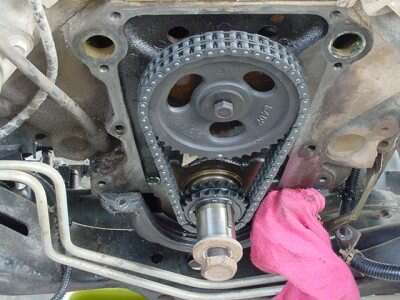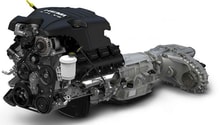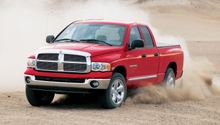Dodge Ram 1994-2008: Engine Noise Diagnostic
You hear a strange sound coming from under the hood—what can it be? Continue reading to find out the possible culprits.
This article applies to the Dodge Ram 2nd and 3rd Generation (1994-2008).
The only sounds we want to hear from our trucks are the satisfying growl of the engine revving and its smooth horsepowering rumble at high speeds. Over time, however, other sounds could develop that may indicate a new problem—primarily a "knocking" or "ticking" noise coming from the motor. To prevent those sounds from transforming into a mechanical problem, address the issue as soon as possible. Here are a few steps you can take to help you diagnose the issue.

Materials Needed
- Mechanic's stethoscope
- Ratchet and socket set
- Flat head screwdriver
- PB Blaster
- Lifters (if necessary)
- Exhaust manifold gasket (if necessary)
- Timing chain kit (if necessary)
Step 1 – Locate source of the noise
Before we begin locating the noise, check the level of the engine oil and make sure there is a sufficient amount. A lack of engine oil reaching the top of the engine could cause the rocker arms to fall out as well as cause the lifters to "stick," both of which could be the cause of the ticking sound.
Now, the problems you can't see are difficult to diagnose, but those you can hear could be a bit more forgiving. To find the source of the noise, use a mechanic's stethoscope to listen around the inside of the engine.
- With the engine running, press the tip of the stethoscope onto various locations of the engine. Try to narrow down and pinpoint the area where the ticking or tapping sound is coming from.
- Specifically, listen for noise at the rocker arm bolts.
- Visually inspect the areas around the pulleys and the exhaust manifolds.
- Remove the valve covers and inspect the spark plugs.
- Observe oil seepage at the lifters to determine if one of them is stuck.

Figure 1. Example of a mechanic's stethoscope. 
Figure 2. Fallen rocker arm.
If the lifters, rocker arms, or visible engine components aren't causing the noise, move on to the following step.
Featured Video: Fallen Rocker Arm
Step 2 – Check the exhaust manifold gasket
If there's a leak in the exhaust manifold gasket, the sound is very similar to that of a "lifter tap" or "ticking" sound.
- With the engine off, spray the heads of the exhaust manifold bolts with PB Blaster penetrating oil or something similar.
- Using a six-point socket, remove the bolts.
- Remove the exhaust manifold and replace the gaskets.
- Then secure the bolts.

Pro Tip
When soaking the bolts in penetrating oil, you'll want to allow some time for the oil to kick in before attempting to remove the bolts. You may run the risk of breaking them within the manifold, making its removal a lot more difficult.
If the exhaust manifold is not the issue, move on to the following step.
Step 3 – Check the timing chain
Since there may be significant play in the timing chain or something in the system has worn out, the cause could be a loose chain that's rattling about in the compartment. If the chain if off by a tooth and has developed some "play," you would most likely hear ticking and tapping sounds. To replace the timing chain:
- Drain the coolant via the radiator's drain cock.
- Remove the drive belt and fan shroud.
- Remove the power steering pump and its bracket.
- Remove the alternator and its bracket.
- Remove the A/C compressor and its bracket.
- Remove the idler pulley.
- Remove the water pump and its hoses.
- Remove the timing chain cover.
- Turn the crank to TDC, and mark the cylinder 1 position on the distributor cap.
- Remove the crank pulley and bolt.
- Remove the bolts for the tensioner pulley.
- Remove the old timing chain and install the new one.

Figure 4. Example of slack in the timing chain. 
Figure 5. Example of proper tension in the timing chain.
Pro Tip
Most of the larger components are removed for clearance purposes. The hoses do not have to be completely removed and the units can be set aside to give you room to work in.
Featured Video: Old Timing Chain Noise
Related Discussion
- Engine Noise Information - DodgeForum.com






